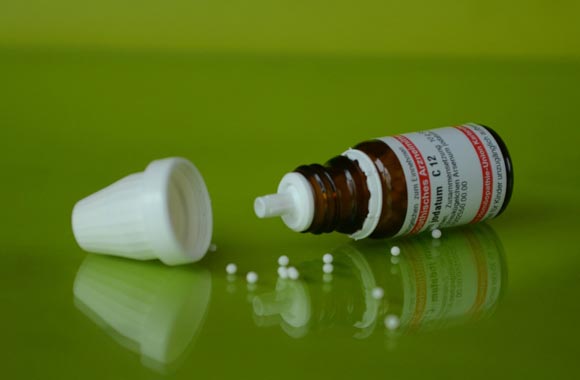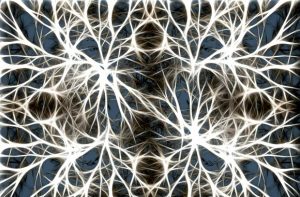Addictive Disorders
Addiction is a recalcitrant, chronic, physical, psychological dependence, and stubbornly relapsing disease. It often begins with a desire to get pleasure and a stress-free mind. It occurs when someone needs to be successful and then takes stimulants. These addictive disorders are when someone wants to enhance his sexual need and time or is caused by certain drugs or substances used for medical treatment or consumed for different reasons.
Addiction is an illustration of what can happen when scientific knowledge, the art of medicine, local consumers, and law and crime start to overlap. The complexities of addiction are immense and it is one of the controversial issues that almost everybody has an opinion about it.
There are many things whose addiction is done by the people. These include Smoking, Alcohol, Heroin, Opioids, Amphetamine, Benzodiazepines, Barbiturates, Computers, Work, the Internet, TV, Video, Games, and Food.
Today the excessive use of these addictive things is affecting the physiological as well as moral and social values of an individual. Some of the addictive disorders include:
Alcohol abuse: Some people become addicted to alcohol and consume too much. They become dependent on it. This leads to various adverse effects on them. Alcohol use is morally not acceptable. Its use is a common problem among teens and this abuse-possess serious health and social consequences for the drinker. It can kill; the respiratory centers of the brain which become anesthetized and stop breathing. Alcohol intake is also responsible for accidental deaths including automobile fatalities.
Treatment* for alcohol abuse: Alcohol abuse should be stopped and its withdrawal effects are also treated successfully with various drugs like benzodiazepines.
Drug Abuse: Various drugs are also abused. These drug addictions create a wide variety of problems then. Dependency on drugs also occurs.
Treatment* for drug abuse: Proper medication along with psychiatric therapy is needed.
Bulimia nervosa: This is a condition in which a person eats too much and gets pleasure from eating lots of food. There is a sense of lack of control over eating during the episodes. He then gets electrolyte imbalance and irritation and infections associated with vomit and diarrhea.
Treatment* for bulimia nervosa: Psychological therapy is to be done. Fluoxetine which is an antidepressant is found beneficial in the treatment of this disorder. Naloxone an opiate antagonist is also helpful in suppressing the utilization of sweet and high-fat foods in binge eaters.
Anorexia nervosa: Here person becomes so much conscious about his weight that he leaves eating food and becomes anorexic and his body is thin lean and weak.
Treatment* for anorexia nervosa: It consists of intake of food from each of the food groups and the use of a well-balanced diet along with medications. The feelings of bloating can be reduced by the use of small frequent feedings. Behavioral therapy should be done on these patients.
Smoking: Due to lots of advertisements on TV showing it as the symbol of being powerful, teenagers especially get influenced and start smoking and become addicted to it. It is because of nicotine in the cigarette. The hazards of smoking lead to many fatal diseases.
Treatment* for smoking: Try to avoid it slowly by making yourself strong enough. You can use different alternatives to smoking. To quit smoking can be easy, but you have to truly want this and have great willpower.
Computer and Internet Addiction: This thing is very common these days. People spend hours in front of the computer and the internet. This can lead to dark circles around the eye, decreased vision, and social withdrawal.
Treatment*: This thing should be discouraged instead these people should be encouraged to take part in physical activities.
There are so many things in the world to which people are addicted. It only depends on the person’s will how to overcome these addictions. A person’s best defense against these addictions is his strong willpower. When he discovers body and mind are needed, he becomes unwilling to sacrifice health for conformity. To respect and value, someone may be lifesaving.

Alcohol Abuse & Dependency
Alcohol has occupied an important place in the history of humankind for at least 7000 years. In western society, beer and wine were the main staples of daily life until the 19th century. These being relatively dilute beverages were preferred over water, which was known to be associated with acute and chronic illness. They provided important calories and nutrients and served as the main source of daily liquid intake. A system for improved sanitation and water purification was introduced in the 1800s, wine and beer became less important components of the human diet and the use of alcoholic beverages consisting of distilled preparation with a higher concentration of alcohol, shifted towards their present-day role, in many societies, as a socially acceptable form of recreation.
Today alcohol is widely used. Like other sedative-hypnotic drugs, alcohol in low to moderate amounts relieves anxiety and fosters a feeling of being happy or even produces euphoric feelings. However, alcohol is one of the most common addictive disorders in the world and it is the major cause of vast medical and societal costs.
Alcohol Abuse
Although the majority of people can enjoy the pleasurable effects of alcohol without allowing their alcohol consumption to become a health risk, still few proportions of people from the general population are unable to limit their alcohol uses, and this condition is called alcohol abuse. People who continue to drink alcohol despite medical and social bad consequences related directly to their alcohol usage suffer from alcoholism. Alcoholism is a complex disorder with genetics as well as environmental determinants.
Alcohol Dependency
It is a state in which an individual becomes dependent on alcohol for everything. He uses alcohol to get relief, to perform some important tasks, and make it routine to drink it anyhow. Such individuals suffer from severe anxiety and cravings due to the deprivation of alcohol. They become dependent on it both psychologically and physiologically. If they do not get alcohol they feel agitation, seizures, tremors, and insomnia.
Alcohol abuse and dependency produce a wide range of effects on our bodies. These includes
Acute Effects
Effects on Central Nervous System: These are sedation, loss of inhibition, slurred speech, impaired judgment, and irregular movements. Impairment in driving ability also occurs.
Effects on Other Organs: It depresses the heart, relaxes the vascular smooth muscles, and causes hypothermia.
Chronic Effects
Tolerance and Dependence occur as a result of adaptation.
Liver: Diseases of the liver are common in people suffering from alcohol abuse such as cirrhosis of the liver, hepatitis, and liver failure.
Gastrointestinal Tract: In the gut scarring, irritation, inflammation, and bleeding occur and may result in absorption defects and nutritional deficiencies.
Central Nervous System: Peripheral neuropathy is most common among chronic alcoholics. If there is thiamine deficiency in them, it will lead to Wernicke-Korsakof syndrome.
Endocrine system: Gynecomastia, testicular atrophy, and salt retention occur.
Cardiovascular System: Hypertension, anemia, arrhythmias, and cardiomyopathy are common.
Neoplasia: The increase and chronic use can lead to neoplastic changes in the gut and in females breast cancer chances increase.
Treatment*
Various symptoms are treated with different medicines like benzodiazepines. For treating alcoholism acamprosate is FDA approved drug, other including naltrexone and disulfiram are also found beneficial in treating chronic alcoholism.

Drug Abuse & Dependency
Drug Abuse
Drugs are abused because they cause strong feelings of euphoria and alter perceptions. It is usually taken to mean the use of an illicit drug or the excessive or nonmedical use of a licit drug. Drug abuse also donates the deliberate use of chemicals that are generally not considered drugs by the lay public but may be harmful to the user. A primary motivation for drug abuse appears to be the anticipated feeling of pleasure derived from the CNS effects of the drugs. However, repetitive exposure induces widespread adaptive changes in the brain. As a result of this drug use may become compulsive which is the hallmark of addiction.
Every addictive drug causes its characteristic spectrum of acute effects, but all of them have in common one effect the strong feelings of euphoria and reward. With continuous use, addictive drugs induce adaptive changes such as tolerance which is the escalation of the drug to maintain an effect. Once the drug of abuse is not available, signs of withdrawal become apparent.
Drug Dependence
A combination of such signs referred to as the withdrawal syndrome defines dependence. The body becomes dependent on the availability of the drug. Drug addiction is characterized by a high motivation to obtain and use a drug despite negative consequences. If the drug is not available, a person craves its need and wants anyhow. This is the withdrawal effect that leads to further use of drugs and dependence.
Withdrawal Effect of Drugs: Physiological dependence occurs with continuous use of any drug. The most important signs of withdrawal derive from excessive CNS stimulation and include nausea, vomiting, tremors, anxiety, delirium, sweating, yawing, rhinorrhea, muscle jerks, hyperpnoea, and hallucinations.
Some of the important drugs:
Sedative hypnotics: These include benzodiazepines, barbiturates and ethanol are drugs of abuse. These are used to combat anxiety but their continuous use leads to their abundance.
Opioids: They are also very commonly abused drugs and this group includes heroin, morphine, oxycodone, and among health professionals, meperidine and fentanyl.
Caffeine and nicotine: Cigarette smoking is very common. Tobacco is associated with a high risk of cardiovascular diseases.
Amphetamine: It is abused for stimulation of the brain
Marijuana: It is a collection of terms for the psychoactive components present in the plant hemp. Hashish is one of its forms that is used abundantly as a drug of abuse.
Hallucinogens: These include phencyclidine, lysergic acid diethylamide, psilocybin, and mescaline.
Abuse is also done by inhalation of certain gases or volatile gases as well.
Causes
Some diseases like chronic pain, depression, anxiety, sleep disorders, or many other diseases lead to the chronic use of drugs and their dependence. Some people take a drug to get pleasure and become addicted to them.
Behavioral effects
Drug addiction leads to many immoral acts and the deterioration of a person’s personality. Such a person becomes unaware of what is right and what is wrong. He becomes abusive and forgets his moral values. He does crimes even. He can kill anyone just to fulfill his drug needs. He lost everything for this fulfillment of drug addiction.
Treatment*
The pharmacological intervention may aim to eliminate this addiction along with withdrawal effects. Some of the drugs used against this addiction are naltrexone, baclofen, and rimonabant. Dependence can be reduced with the support of behavioral interventions.

Eating Disorders
Some people become so obsessed to lose weight that their dieting progresses to a dangerous point. Millions of people in the world primarily young girls and women suffer from eating disorders namely anorexia nervosa and bulimia nervosa. Many others suffer from unspecified eating disorders, conditions that do not meet the strict criteria for anorexia nervosa or bulimia nervosa but still imperil a person’s well-being. Excessive pressure to be thin is at least partly to blame. By making thinness the ideal, society pushes people to view a healthy body of normal weight as too fat and chubby. Healthy people then adopt unhealthy eating behaviors to battle this imaginary problem. The social factor to be thin is no doubt a factor in the development of eating disorders but there have been thought to be multifactorial; sociocultural, psychological, and also neurochemical.
Athletes are likely to be suffering from such disorders. Many young athletes do very severe restrictions on energy intake to improve performance and they suffer from many diseases due to this disorder.
Anorexia Nervosa
This is a disorder in which a person especially a female rejects to eat to be thin and she feels that she is very fat and needs less food. This disorder damages the body much as starvation does. After a few months of being anorexic, people suffer from protein-energy malnutrition that is similar to marasmus disease.
Destruction of the body
Victims are dying to be thin-quite literally. In young people due to anorexia, growth usually ceases and normal development falters. They lose so much lean tissue that their basal metabolic rate slows, an effect that is found to remain even after the treatment and weight gain. The heart pumps inefficiently and irregularly, muscles of the heart become thin, weak, and atrophic and the chamber size diminishes. Other things which occur due to this disorder are decreased immunity, anemia, and loss of digestive functions that worsen malnutrition.
Amenorrhea
Women with this disorder especially develop amenorrhea. Anorexia delays menstruation in young girls but the menstrual period usually resumes and becomes regular after recovery from this disorder.
Treatment*
The treatment of anorexia nervosa requires a multidisciplinary approach. There should be a team consisting of physicians, nurses, psychiatrists, family therapists, and dietitians to work together and enable the person to get rid of this disease. The first dietary aim is to stop weight loss while stabilizing regular eating habits. Another treatment is symptomatic.
Bulimia Nervosa
This disorder is distinct from anorexia and is more prevalent. In this disorder, a bulimic binge is unlike normal eating. Food is eaten here and consumed for getting emotional comfort, not for nutritional purposes. Eating food is also not the primary response to hunger but it is a compulsion. Such patients eat a lot secretly. This type of behavior mostly occurs in late adolescence or early adulthood.
Destruction of the Body
Since this disorder is accompanied by vomiting and diarrhea so these things lead to electrolyte imbalance and abnormal heart rhythm and occur along with renal injury. Vomiting can further result in infection and irritation in the pharynx, salivary glands, and esophagus.
Treatment*
To gain control over food and establishing regular eating habits is the main purpose of the treatment. Psychiatric therapy should be done to remove the patient from depression and addictive behaviors.

Anxious Eating
Anxious eating can do serious damage to your health.
Life is not easy. In this life, at some time we may become helpless due to different stresses and tensions. Some people are brave enough to handle these and come out successfully but a few people may suffer from various problems. Anxious eating is one of them.
Because of certain tensions, anxiety, and stress, people want to keep out of them so they eat and find respite in eating. This thing leads to a bout of overeating. And we know this overeating is how much hazardous to our health.
Thinking about the growing worries of the people, anxious eating has become even more of a fear. It can be a psychiatric disorder. Although, eating good food at the proper time is very essential. Food is vital for the health of a body but if someone starts eating too much, it can be dangerous to health. As overindulgence in everything is bad so does too much eating. But there is not only overeating, but anxious eating can also be a lack of eating. This is seen especially among teenage girls, who take stress due to their body’s shape and figure. This leads to hate of the food and so these girls starve and suffer from various serious problems.
Whenever you eat a lot, in your opinion you are getting peace from your distressed mind but you are making your body suffer from serious harm. By eating lots of food, you lead to an accumulation of the increased amount of fats and in this way, you become chubby. Not only fat but also you give an invitation to lots of other diseases. The common among is hypertension and diabetes mellitus.
Anxious eating also comes with problems of certain heart diseases. As we know, an increase in fats leads to hypercholesterolemia. This further progresses to atherosclerotic changes in the arteries particularly those of the heart and brain. So, the chances of a heart attack, as well as cerebrovascular accidents, increase. In this way, a person becomes the victim of various problems. Above all, an eating disorder may itself be a psychiatric problem so, in addition to these, people suffering from anxious eating further develop lots of other health conditions and problems.
Similarly, people who neglect eating just because of stress or to fulfill their dreams of being in shape and slim, also acquire many health problems. These suffer from loss of muscle bulk, imbalance of electrolytes, anemia, weakness as well as many other problems. Girls, if do not eat enough food just because they think that they are fat, suffer from menstrual irregularities.
It is essential to realize that either eating too much or too low is seriously very harmful to the body. In any situation, one has to be moderate in everything. Even if you are under any kind of stress, try to handle it bravely. Those girls who eat too low because of the fear of getting fat should be counseled properly. They should be warned of the serious effects on their health due to this lack of eating.




